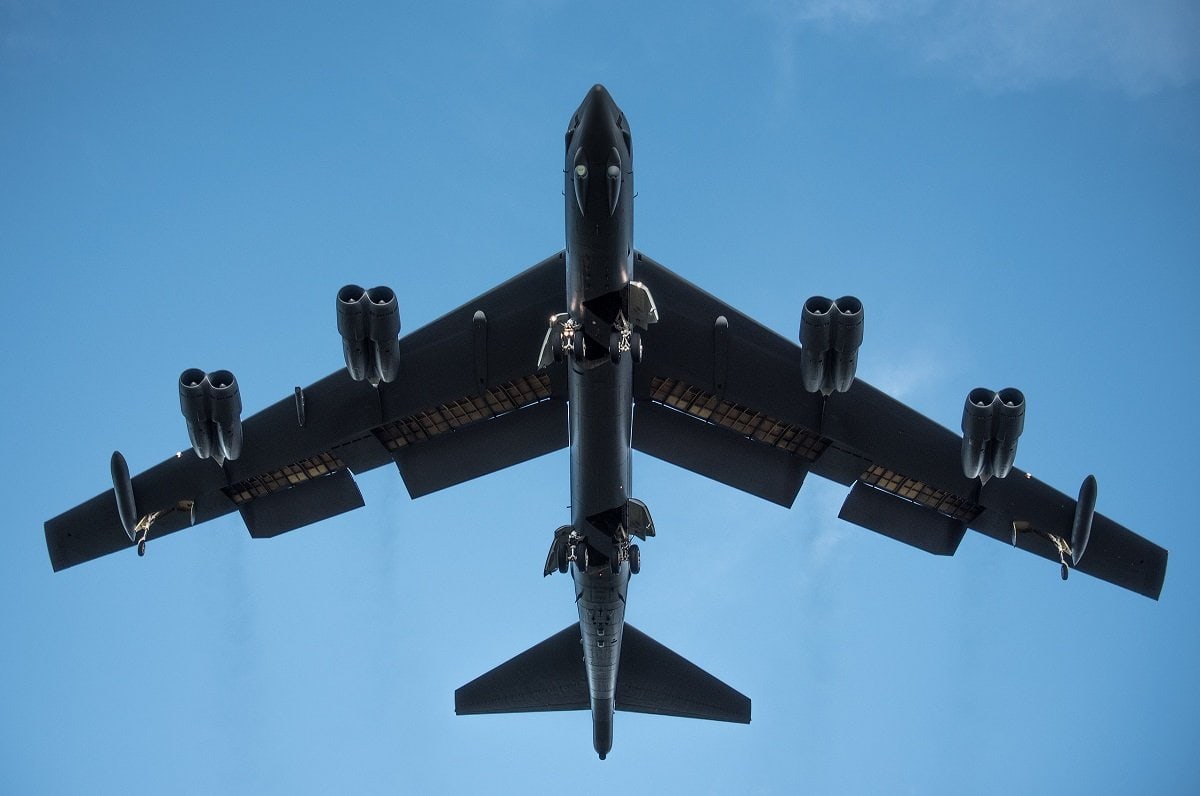A recent exercise proved that the old B-52 bomber’s range, capability, and flexibility can hold off father time just a little longer–and deter Russia.
For some U.S. Air Force B-52 Stratofortress pilots, this year’s Memorial Day will be one to remember as they took part in the second Operation Allied Sky. It involved the Cold War bombers flying over thirty NATO and partner nations in Europe and North America on the same day. Allied Sky is the latest iteration of routine Bomber Task Force (BTF) missions that have occurred in the European theater of operations since 2018.
This second Allied Sky was conducted in two parts: a Europe Leg where B-52s deployed to Morón AB flew overall NATO nations in Europe, during which the bombers completed aerial refueling and integrate with several ally aircraft; and the North American Leg where stateside-based aircraft integrated with aircraft from the U.S. and Canada while flying over both nations.
The Air Force did not specify how many B-52 participated in the exercise but highlighted the need to conduct such missions.
“Bomber missions demonstrate the credibility of our forces to address a global security environment that is more diverse and uncertain than at any other time in our history,” said Gen. Jeffrey L. Harrigian, NATO Allied Air Command, and U.S. Air Forces in Europe-Air Forces Africa commander. “(This) mission is an awesome demonstration of NATO air superiority and together there is no challenge we cannot tackle.”
According to U.S. European Command, NATO nations that had been scheduled to participate in the mission and integrate with U.S. aircraft included Belgium, Bulgaria, Canada, Croatia, Czech Republic, Denmark, France, Germany, Greece, Hungary, Italy, Netherlands, Norway, Poland, Portugal, Romania, Slovakia, Spain, Turkey, and the U.K.
KC-135 Stratotankers assigned to the 100th Air Refueling Wing (ARW), Royal Air Force Mildenhall, United Kingdom, provided support for the large-force event. The 100th ARW is the only permanent U.S. Air Force air refueling wing in Europe, extending the reach of U.S. and NATO aircraft in Europe and beyond.
The Memorial Day flight of the B-52s followed a similar exercise that was conducted last August, where six B-52s – including four deployed to RAF Fairford, United Kingdom – flew over all European member nations, while two B-52s from Minot AFB, North Dakota, flew over the United States and Canada. The single-day mission was intended to demonstrate NATO solidarity, enhance readiness and provide training opportunities that were aimed at enhancing interoperability for all participating aircrews from the U.S. and NATO allies.
While the B-52 Stratofortress dates back to the 1950s, the bombers have gone through numerous upgrades and enhancements, which them to perform a variety of missions at subsonic speeds at high altitudes. Additionally, the Cold War-era aircraft has a combat range of 8,800 miles while able to carry precision-guided ordnance with worldwide precision navigation. The United States Air Force currently operates seventy-six B-52s, which continue to be deployed around the world.
Peter Suciu is a Michigan-based writer who has contributed to more than four dozen magazines, newspapers and websites. He regularly writes about military small arms, and is the author of several books on military headgear including A Gallery of Military Headdress, which is available on Amazon.com.

